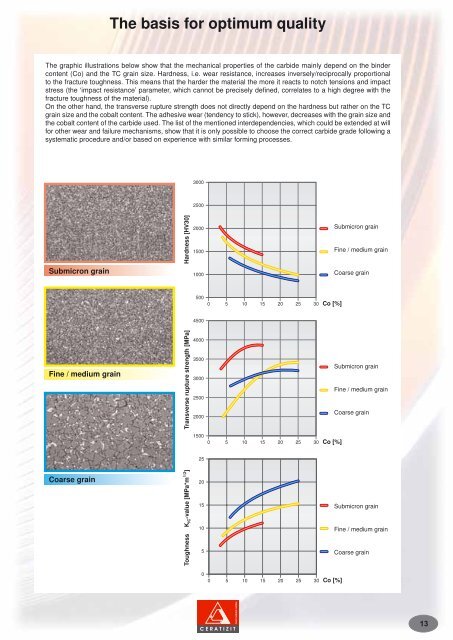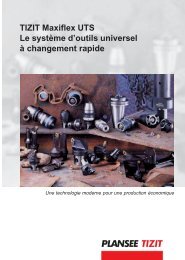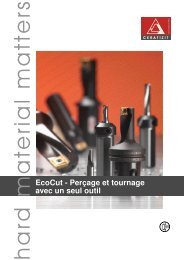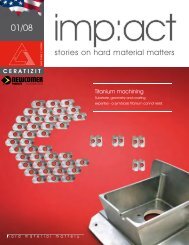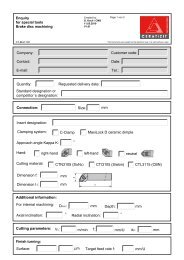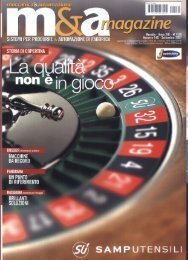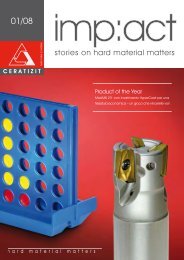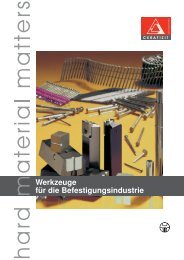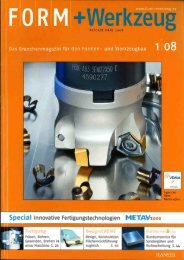Wear parts
Wear parts
Wear parts
You also want an ePaper? Increase the reach of your titles
YUMPU automatically turns print PDFs into web optimized ePapers that Google loves.
The basis for optimum quality<br />
The graphic illustrations below show that the mechanical properties of the carbide mainly depend on the binder<br />
content (Co) and the TC grain size. Hardness, i.e. wear resistance, increases inversely/reciprocally proportional<br />
to the fracture toughness. This means that the harder the material the more it reacts to notch tensions and impact<br />
stress (the ‘impact resistance’ parameter, which cannot be precisely defined, correlates to a high degree with the<br />
fracture toughness of the material).<br />
On the other hand, the transverse rupture strength does not directly depend on the hardness but rather on the TC<br />
grain size and the cobalt content. The adhesive wear (tendency to stick), however, decreases with the grain size and<br />
the cobalt content of the carbide used. The list of the mentioned interdependencies, which could be extended at will<br />
for other wear and failure mechanisms, show that it is only possible to choose the correct carbide grade following a<br />
systematic procedure and/or based on experience with similar forming processes.<br />
Submicron grain<br />
Fine / medium grain<br />
Coarse grain<br />
Hardness [HV30]<br />
Transverse rupture strength [MPa]<br />
Toughness K IC-value [MPa*m 1/2 ]<br />
Submicron grain<br />
Fine / medium grain<br />
Coarse grain<br />
Submicron grain<br />
Fine / medium grain<br />
Coarse grain<br />
Submicron grain<br />
Fine / medium grain<br />
Coarse grain<br />
13


